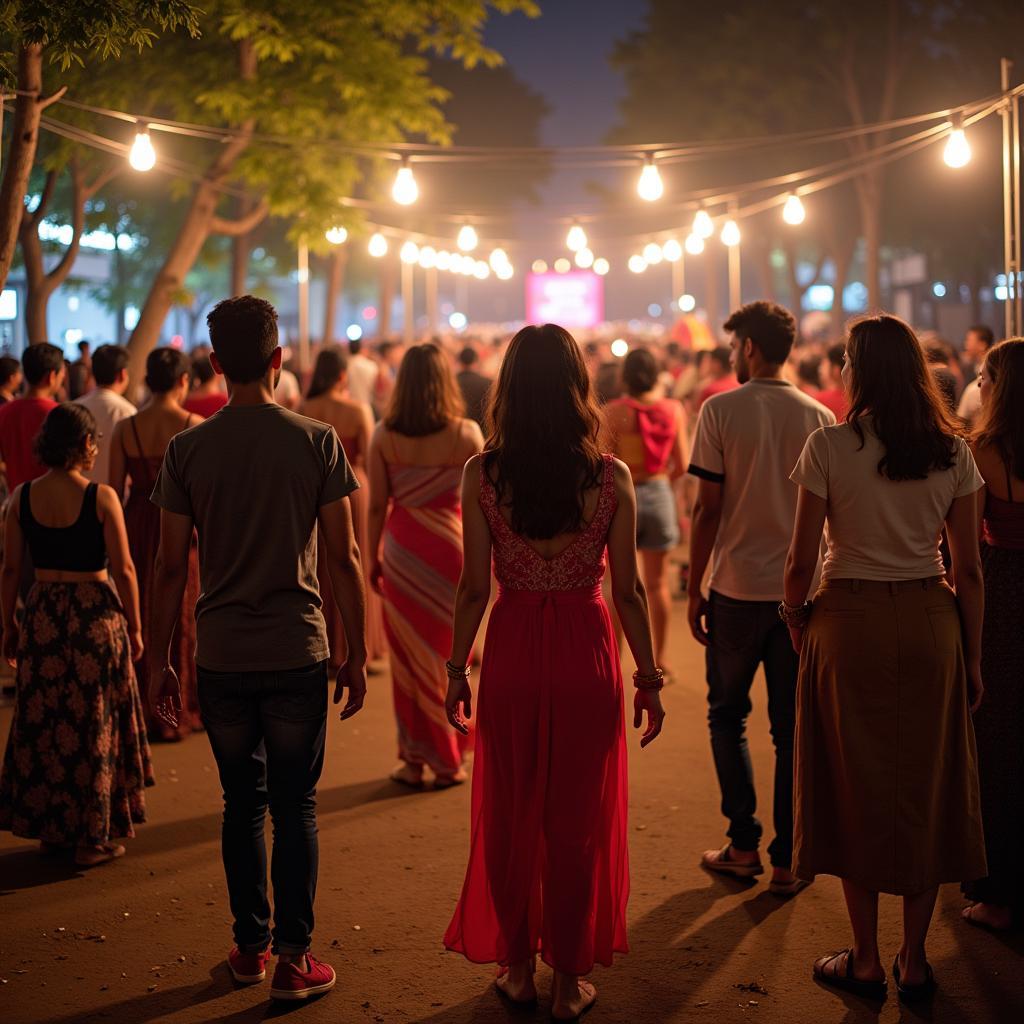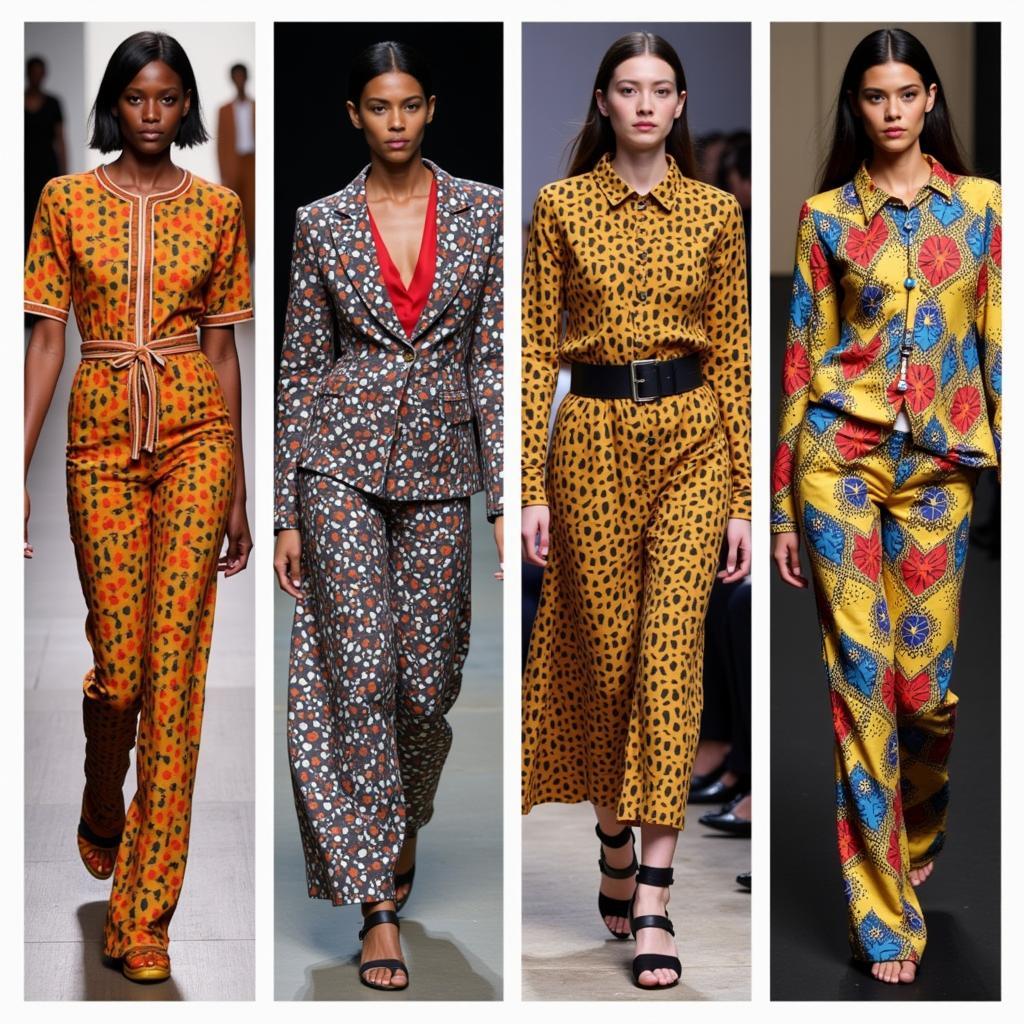Unveiling the Mysteries of the African Ghost Mask
African Ghost Masks, steeped in tradition and imbued with spiritual significance, represent a powerful connection to the ancestral world. These mesmerizing artifacts aren’t simply decorative objects; they embody complex beliefs, rituals, and social structures across diverse African cultures. From the elaborate headdresses of the Dogon people to the stark beauty of Dan masks, exploring these artifacts offers a glimpse into the rich tapestry of African artistry and spiritual life. After reading this article, you’ll have a deeper understanding of the meaning, craftsmanship, and cultural contexts surrounding these captivating objects.
The allure of the African ghost mask lies in its ability to transcend the physical realm and connect with the spiritual. These masks are often used in ceremonies, rituals, and performances, acting as conduits between the living and the dead. They represent ancestors, spirits, and deities, embodying both reverence and fear. Beyond their spiritual importance, African ghost masks also play crucial roles in maintaining social order, upholding cultural values, and transmitting knowledge across generations. This deep connection to tradition makes them invaluable cultural treasures. More than just artistic expressions, they are tangible links to the past. What secrets do these masks hold? Let’s delve deeper into their intricate world.
The Spiritual Significance of African Ghost Masks
African ghost masks aren’t merely artistic creations; they are powerful symbols of spiritual beliefs and practices. They are often used in masquerades, dances, and initiation rites, where they serve as a tangible link between the living and the spirit world. The masks, often believed to be inhabited by the spirits they represent, allow the wearer to embody the ancestor or deity, becoming a conduit for their power and wisdom. The reverence for these masks is palpable, reflecting a deep respect for ancestral knowledge and the continuity of life beyond death. Different cultures ascribe unique meanings and purposes to their masks, adding to the diversity and richness of these traditions.
Across Africa, you’ll find variations in the materials, designs, and uses of ghost masks, reflecting the diversity of the continent’s cultures. For example, some masks, like those of the Ibo people, are associated with specific deities or spirits, while others, like those used by the Yoruba, represent ancestral figures who play a significant role in community life. This deep integration of the spiritual and the social makes the study of African ghost masks a fascinating journey into the heart of African culture.
After this section, you will understand the deep-rooted spiritual beliefs intertwined with these masks and their significance in African traditions. The next section will examine the diverse artistic styles and techniques used in their creation.
Crafting the African Ghost Mask: Materials and Techniques
The creation of an African ghost mask is an art form in itself, requiring skill, patience, and a deep understanding of tradition. The materials used vary depending on the region and the specific purpose of the mask. Wood is the most common material, but you’ll also find masks crafted from ivory, bone, metal, and even fabric. The process of creating a mask is often imbued with ritual significance, with specific prayers and offerings made to ensure the mask’s spiritual power. The tools used are often simple, handed down through generations, adding another layer of historical and cultural weight to each mask.
The carving techniques employed by African artisans are as diverse as the masks themselves. Some masks are meticulously carved with intricate details, while others are more abstract and symbolic. The choice of materials, the techniques used, and the final design all contribute to the unique character of each mask, making it a testament to the artistry and creativity of its creator.
Different Types of African Ghost Masks and Their Meanings
There’s a wide variety of African ghost masks, each with its own distinct meaning and purpose. For instance, the masks of the Dogon people often feature elongated faces and intricate headdresses, representing the connection between humans and the celestial realm. The Dan masks, on the other hand, are known for their serene expressions and elegant simplicity, reflecting the values of balance and harmony. Exploring the specific characteristics of different masks reveals a wealth of information about the cultures that created them.
Want to learn about African drama? Check out this insightful article: African drama.
The Mende people of Sierra Leone are known for their Sowei masks, used in female initiation ceremonies, representing ideals of beauty, wisdom, and power. The masks of the Igbo people often depict animal features, connecting them to the natural world and its spiritual forces. These are just a few examples of the rich diversity of African ghost masks, each telling its own unique story.
The African Ghost Mask in the Modern World
While deeply rooted in tradition, the African ghost mask continues to evolve in the modern world. Contemporary artists draw inspiration from these ancient forms, creating new interpretations that reflect contemporary issues and perspectives. These masks often find their way into art galleries and museums, reaching a global audience and sparking conversations about cultural heritage and artistic expression. It is a testament to the enduring power of these objects that they continue to fascinate and inspire across cultures and generations.
Interested in African black knife fish? Learn more by clicking African black knife fish. The legacy of the African ghost mask extends far beyond its traditional context, influencing art, fashion, and design worldwide.
The masks are also increasingly recognized as important cultural artifacts, sparking efforts to preserve and protect them for future generations. This ensures that their stories and the traditions they represent continue to be shared and appreciated. Learning about African ghost masks is a journey into a world of profound spiritual beliefs, intricate artistry, and enduring cultural heritage.
Conclusion
African ghost masks are far more than just decorative objects; they are powerful symbols of spiritual beliefs, artistic expression, and cultural heritage. From the intricate carvings to the profound meanings they embody, these masks offer a glimpse into the rich tapestry of African cultures. Understanding the significance of African ghost masks allows us to appreciate the depth and complexity of African traditions and the enduring power of these captivating artifacts. Learn about African drug trafficker Ike.
FAQ
- What are African ghost masks typically made of? Wood is the most common material, but other materials like bone, ivory, metal, and fabric are also used.
- What is the spiritual significance of African ghost masks? They are often seen as conduits to the spirit world, representing ancestors, deities, and spiritual forces.
- How are African ghost masks used? They are often used in ceremonies, rituals, dances, and masquerades.
- Where can I see African ghost masks? Museums, art galleries, and cultural centers often have collections of African masks.
- Are African ghost masks still made today? Yes, both traditional and contemporary artists continue to create African ghost masks.
- What are some famous types of African ghost masks? Dogon masks, Dan masks, Sowei masks, and Igbo masks are just a few examples.
- What is the best way to learn more about African ghost masks? Researching online, visiting museums, and reading books about African art and culture are excellent ways to learn more.
You might also want to explore African American Halloween traditions.
What other questions do you have about African culture? Do you want to learn about specific tribes or regions?
When you need help, please call +255768904061, email kaka.mag@gmail.com, or visit Mbarali DC Mawindi, Kangaga, Tanzania. We have a 24/7 customer service team.

